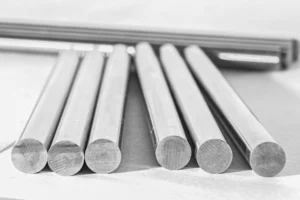Table des matières
BasculerCarbide Rods with Heat Resistance
In the world of industrial manufacturing, where efficiency and reliability are paramount, the choice of materials can significantly impact performance. One standout option is the Tige en carbure avec résistance à la chaleur. This robust material is increasingly favored across various industries for its unique benefits, making it a smart investment for businesses seeking durability and high-performance solutions. But what exactly makes these carbide rods so beneficial, and where can they be applied? Let’s explore their advantages and the areas where they thrive.
Understanding Carbide Rods with Heat Resistance
Carbide rods are made from a mixture of carbon and metal, usually tungsten, creating a compound that offers remarkable hardness and strength. When designed with heat resistance, these rods can withstand high temperatures without compromising their structural integrity. This property is critical in industries that involve high heat or require precise machining.
For instance, consider the aerospace industry, where components must endure extreme temperatures during operation. In this realm, using carbide rods with heat resistance can ensure the longevity of tools and parts, ultimately leading to cost savings and enhanced safety.
Benefits of Carbide Rods with Heat Resistance
1. Durabilité exceptionnelle :
One of the most significant advantages of carbide rods with heat resistance is their durability. Compared to other materials, these rods last longer, reducing the need for frequent replacements. In manufacturing processes like cutting or grinding, the longevity of tools can directly affect productivity. A carbide rod can withstand wear and tear better than conventional materials, which means that factories can maintain production levels without interruptions.
2.High-Temperature Performance:
Heat resistance is a critical factor when choosing materials for industrial applications. Carbide rods perform exceptionally well even under high temperatures. For example, in the metalworking industry, high-speed machining generates significant heat. Using carbide rods with heat resistance allows machines to operate efficiently without overheating or losing their edge quality. This makes them an ideal choice for industries where precision is non-negotiable.
3. Polyvalence dans les applications :
Carbide rods with heat resistance are not confined to a single industry. Their versatility allows them to be utilized in diverse fields, from automotive to mining. For example, the oil and gas industry frequently relies on these rods for drilling applications. As drilling operations reach greater depths, the rock temperatures rise. Carbide rods can handle these conditions, ensuring that drilling equipment remains functional and effective.
4. Improved Machining Efficiency:
When it comes to manufacturing, efficiency is key. Carbide rods enhance machining efficiency, enabling higher speeds and feeds during operation. This translates to faster production cycles and more finished products within a given time frame. For example, a company using carbide rods with heat resistance might achieve a 20% increase in productivity, allowing them to meet customer demands swiftly without sacrificing quality.
5. Cost-Effectiveness Over Time:
While it’s true that carbide rods with heat resistance may have a higher initial cost, the long-term savings are undeniable. Due to their durability and reduced wear, operators spend less on replacements and maintenance. Additionally, the efficiency gains translate to lower operational costs. Factoring in the reduction in downtime and enhanced output, companies often find that the total cost of ownership is significantly lower with carbide rods.
Real-World Examples of Carbide Rods in Action
One notable example is seen in the manufacturing of cutting tools. Cutting tools made from carbide rods with heat resistance are common in fabricating metals. A leading automotive manufacturer reported that switching to these rods increased the lifecycle of their cutting tools from 3,000 to 5,000 cuts. The result was substantial savings in tool replacement costs, as well as reduced labor time spent on changing tools.
In the aerospace sector, another example can be observed where carbide rods were used in the production of turbine blades. These blades must retain their shape and integrity even under extreme conditions. By employing heat-resistant carbide rods, manufacturers were able to produce blades that improved efficiency and safety in flight operations, which is crucial in a high-stakes industry.
The Future of Carbide Rods with Heat Resistance
As technology advances, the applications for carbide rods with heat resistance are likely to expand. Ongoing research and development continue to refine their properties, making them more effective across various applications. This development opens doors for industries to adopt these high-performance materials, further enhancing productivity and safety.
Businesses looking for solutions that offer both endurance and efficiency should consider the merits of carbide rods with heat resistance. With their ability to withstand temperature extremes and their long-lasting nature, these rods are not only a wise investment but also a step forward in improving manufacturing methods.
Conclusion
In conclusion, carbide rods with heat resistance are essential for modern industrial applications. They provide durability, high-temperature performance, versatility, improved machining efficiency, and long-term cost savings. Their advantages are evident across multiple industries, showcasing their effectiveness in enhancing productivity and safety. As we look towards the future, it’s clear that carbide rods with heat resistance will play a pivotal role in shaping efficient manufacturing processes and advancing technology. When investing in industrial materials, choosing carbide rods with heat resistance is a decision that promises value and reliability for years to come.
